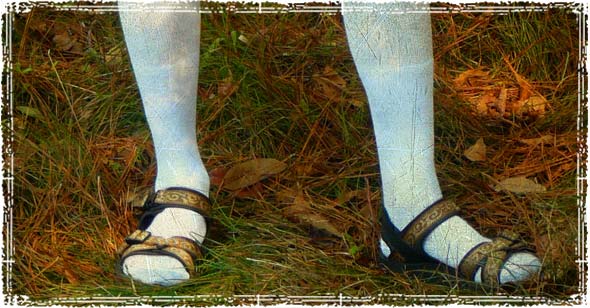Hiking socks are often a piece of gear that is either overlooked, or completely ignored. While it might not be as exciting as that new Bushcraft knife you have your eye on, a quality hiking sock is one of those items that can definitely play an important role in your comfort out on the trail.
Much like picking the right hiking footwear, selecting a good hiking sock is something that can have a significant impact out on the trail. When choosing the right pair of hiking socks there are a few things you need to consider.

What type of Conditions will you be hiking in?
Different types of socks have different types of benefits out on the trail. What works well in one environment, might be your downfall in another. The first step in picking the right type of hiking sock is to think about what types of environments you will be hiking through.
Lightweight hiking socks: These types of socks are usually made from wicking fabrics that can help draw moisture away from your feet. They are best suited for warm weather environments, as they are made to keep your feet dry and blister free instead of focusing on warmth.
Midweight hiking/backpacking socks: Traditional hiking socks are designed to provide cushioning, insulation and extra padding in high-impact areas. These types of socks are usually worn with a liner to help prevent blisters.
Mountaineering socks: Mountaineering socks are thick, provide extra insulation, and are designed for extreme cold weather environments. They are usually made out of wool, and provide you with the warmth you need during freezing temperatures. Even when wet, wool is an excellent insulator that will still keep your feet warm.
Hiking Liners: Sock liners are thin, lightweight wicking socks designed to keep your feet dry and blister free. They are designed to be worn under hiking socks, and help cut down on abrasion. When looking for a good inner sock, look for fabrics that are smooth against the skin like polypropylene.
Picking the right Fabric Material
When it comes to picking the right type of sock, the material it’s made from is one of the top factors in finding one that works well out on the trail.
Wool: Wool is the most popular natural sock materials, and is probably one of the best all-around fabrics that you can buy. When buying wool socks, look for newer materials like merino wool or synthetic blends which are far less abrasive than older scratchy wool.
One of the biggest benefits of wearing wool is its ability to quickly dry in wet conditions, and also retain warmth when wet.
Synthetic Blends: There are a number of new synthetic blends that can outperform older materials. Materials like CoolMax® polyester fibers can help keep your feet cool and dry in hot environments. Materials like Hollofil®, Thermax®, Thermastat® are designed to trap warmth like wool, but dry more quickly than natural wool.
Cotton: Traditional cotton socks are about the worst thing you can wear out on the trail. They absorb sweat, they dry slowly, and they provide next to nothing when it comes to insulation. Stay away from Cotton.
Silk: Silk is often used as a material in sock liners because of its ability to wick moisture away from the foot.
One sock or two socks?
Wearing one or two socks is really just a matter of personal preference.
Although I mentioned liners, the truth is most modern day hiking socks are made to be worn alone. Advances in synthetic materials and fabric blends can give you everything you need in one pair of socks, without having to add a liner. The only real reason to wear a liner is if you have major problems with blisters, or you are hiking in an area that requires you to add more insulation to your footwear setup.
Socks play a huge role in your comfort out on the trail, and your feet are probably one of the most important things to think about when putting together a good hiking setup. Don’t make the mistake of paying hundreds of dollars for a good pair of hiking boots, only to slip them over a troublesome pair of old socks.



I have some of the best socks on the market, mostley from REI, which is where I get 99% of my outdoor clothing. I am in the US Army, and serving in Iraq. Let me tell you during 130 degree summer days, NO sock keeps you cool and dry.
Ive had problems with socks in the past, that and boots…. started using trekking sandals when and where i can… much better
Socks are definately important, obviously you want to avoid cotton at all times. I’m still not sure why cotton socks are even made lol. Synthetic blends for the summer and warm weather and wool blends for the colder winter months. I’ve never been a fan of sock liners but I hear some people would never consider a hike without them.
For warm weather, I like either ragg wool (85% lambswool, 15% nylon) socks that conform to the shape of the foot–i.e., no balloon feet–or else something like Goldtoe Moretz Powersox merino wool lite crew socks. For cool weather, I get thicker merino wool socks. For very cold weather, the best I’ve found is Woolrich’s Big Woolly 88% merino wool over-the-calf socks.
Public employees are not a protected class. The *government* is a restricted entity, denied the control over its own employees that a private organization possesses. REMOVING those restrictions creates a stronger, more totalitarian, state.Exactly. I always like to see someone peel the layers back logically.
There’s nothing like the relief of finding what you’re looking for.
Hallelujah! I needed this-you’re my savior.